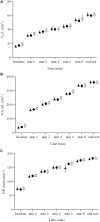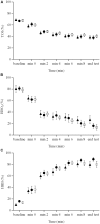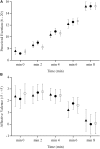Effects of Transcranial Direct Current Stimulation on Psychophysiological Responses to Maximal Incremental Exercise Test in Recreational Endurance Runners
- PMID: 30356689
- PMCID: PMC6189328
- DOI: 10.3389/fpsyg.2018.01867
Effects of Transcranial Direct Current Stimulation on Psychophysiological Responses to Maximal Incremental Exercise Test in Recreational Endurance Runners
Abstract
Previous studies have suggested that transcranial direct current stimulation (tDCS) might improve exercise performance and alter psychophysiological responses to exercise. However, it is presently unknown whether this simple technique has similar (or greater) effects on running performance. The purpose of this study was, therefore, to test the hypothesis that, compared with sham and cathodal tDCS, anodal tDCS applied over the M1 region would attenuate perception of effort, improve affective valence, and enhance exercise tolerance, regardless of changes in physiological responses, during maximal incremental exercise. In a double-blind, randomized, counterbalanced design, 13 healthy recreational endurance runners, aged 20-42 years, volunteered to participate in this study. On three separate occasions, the subjects performed an incremental ramp exercise test from rest to volitional exhaustion on a motor-driven treadmill following 20-min of brain stimulation with either placebo tDCS (sham) or real tDCS (cathodal and anodal). Breath-by-breath pulmonary gas exchange and ventilation and indices of muscle hemodynamics and oxygenation were collected continuously during the ramp exercise test. Ratings of perceived exertion (RPE) and affective valence in response to the ramp exercise test were also measured. Compared with sham, neither anodal tDCS nor cathodal tDCS altered the physiological responses to exercise (P > 0.05). Similarly, RPE and affective responses during the incremental ramp exercise test did not differ between the three experimental conditions at any time (P > 0.05). The exercise tolerance was also not significantly different following brain stimulation with either sham (533 ± 46 s) or real tDCS (anodal tDCS: 530 ± 44 s, and cathodal tDCS: 537 ± 40 s; P > 0.05). These results demonstrate that acute tDCS applied over the M1 region did not alter physiological responses, perceived exertion, affective valence, or exercise performance in recreational endurance runners.
Keywords: affective valence; endurance performance; perception of effort; running; tDCS.
Figures


 ), while the cathodal tDCS and anodal tDCS responses are shown as solid circles (
), while the cathodal tDCS and anodal tDCS responses are shown as solid circles ( ) and triangles (
) and triangles ( ), respectively. Data are presented as mean (±SEM). (A) Group mean E response to ramp incremental exercise. (B) Group mean O2 response to ramp incremental exercise. (C) Group mean HR response to ramp incremental exercise.
), respectively. Data are presented as mean (±SEM). (A) Group mean E response to ramp incremental exercise. (B) Group mean O2 response to ramp incremental exercise. (C) Group mean HR response to ramp incremental exercise.
 ), while the cathodal tDCS and anodal tDCS responses are shown as solid circles (
), while the cathodal tDCS and anodal tDCS responses are shown as solid circles ( ) and triangles (
) and triangles ( ), respectively. Data are presented as mean (±SEM). (A) Group mean TOI response to ramp incremental exercise. (B) Group mean HbO2 response to ramp incremental exercise. (C) Group mean HHb response to ramp incremental exercise.
), respectively. Data are presented as mean (±SEM). (A) Group mean TOI response to ramp incremental exercise. (B) Group mean HbO2 response to ramp incremental exercise. (C) Group mean HHb response to ramp incremental exercise.
 ), while the cathodal tDCS and anodal tDCS responses are shown as solid circles (
), while the cathodal tDCS and anodal tDCS responses are shown as solid circles ( ) and triangles (
) and triangles ( ), respectively. Data are presented as mean (±SEM). (A) Group mean RPE response to ramp incremental exercise. (B) Group mean affective valence response to ramp incremental exercise.
), respectively. Data are presented as mean (±SEM). (A) Group mean RPE response to ramp incremental exercise. (B) Group mean affective valence response to ramp incremental exercise.References
LinkOut - more resources
Full Text Sources

